A fish finder is a very useful tool that, as its name implies, helps you locate fish underwater.
It uses pulses of sound energy (sonar) to create a graphic display of the underwater landscape. The monitor displays fish, ground structures, and debris.
The popularity of fish locators among sport and commercial fishermen has led to a boom in the number of products available. But not all sonars are created equal.
It’s imperative that you select the right model for your needs and preferences as well as the specific conditions you’ll be fishing in. The wrong depth finder isn’t just ineffective, it’s also often unusable.
That’s where our ultimate fish finder buyer’s guide comes into the picture. We break down the most important features (including display, transmitting power, frequencies, and GPS) and provide detailed reviews of the top brands and models.
DISCLOSURE: As an Amazon Associate I earn from qualifying purchases. Links in this article are affiliate links. If you click on a link we may earn a commission if you make a purchase, at no additional cost to you.
The 8 Top Fish Finders: Outdoor Empire Reviews
These are our top recommendations for depth finders:
- Best cheap: Get Garmin Striker 4
- Best for your money’s worth: Get GARMIN Striker Plus 4 with Dual Beam
- Best GPS combo: Get Raymarine Dragonfly 7 Pro
- Best side-imaging: Get Garmin Striker 7SV
- Best down-imaging: Lowrance Elite-7x
- Best high-end: Get Lowrance HDS-7 Gen 3
- Best under $200: Get Humminbird PiranhaMAX 4 DI
- Best Castable Fish Finder: DEEPER Smart PRO Sonar Fish Finder (Read 930+ Amazon reviews)
*Looking for a specific feature? Check out our quick-reference chart below:
| Product: | 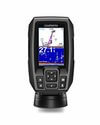 | 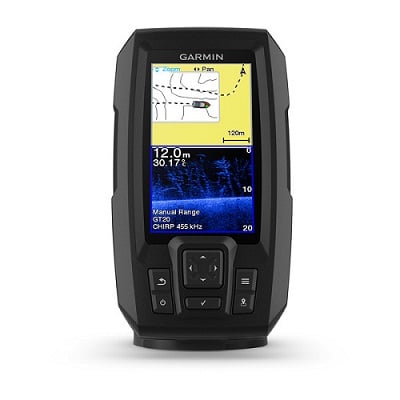 | 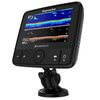 Raymarine Dragonfly 7 Pro | 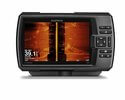 | 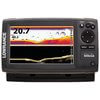 | 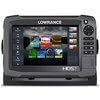 |
|---|---|---|---|---|---|---|
| Display | 3.5'' Color | 4.3" | 7" Built-in Down Vision | 7" color LCD | 7" color LCD with Downvision | 7" multi-touch LED widescreen |
| Transducer | Power:200 W (RMS) , | Power: 200 W (RMS) | Power: - | Power: 500 W (RMS) | Power: 500W | Power: 500W |
| View | CHIRP | Dual-beam transducer with Garmin CHIRP | CHIRP DownVision | CHIRP, DownVÜ, SideVÜ | CHIRP, Down Imaging | CHIRP + HD StructureScan |
| Mount | Transom & Trolling Motor | Transom & Trolling Motor | Transom, Trolling and Through-Hull | Tilt/swivel mount, transom, trolling motor mounting hardware, cable. | Transom & Trolling Motor | All-purpose |
| GPS | Yes | Yes | Yes | Yes | Yes | Yes |
| Price | Check Price | Check Price | Check Price | Check Price | Check Price | Check Price |
1. Best Cheap Fish Finder
The Garmin Striker 4 is the perfect choice for those who don’t want to spend an arm and a leg on a fish finder. Since it is relatively low priced, it’s not as powerful as other models yet it still gets the job done.
It comes with a 3.5” display and up to 1,600 feet freshwater depth performance. The color screen, CHIRP system clarity and backlight make it easy to read the device even in direct sunlight.
The small, rugged design is its highlight. It perfectly fits on a small craft such as a canoe or kayak and is portable.
The transmitter sends signals on multiple frequencies ranging from mid to high 50/77/200 kHz and with 200W sonar power, it’s more than powerful enough for most freshwater lakes.
Garmin made the Striker 4 really easy to use as possible. The display shows very crisp fish arches that make target separation a breeze.
The GPS, which is a great surprise considering the price tag, makes it very convenient to save your best fishing spots or check your trolling speed.
Continue to the full Garmin Striker 4 review…
2. Best Fish Finder For Your Money
- Dual transducers provide high definition, crystal clear picture.
- Garmin Quickdraw Mapping software and integrated GPS included
- Large 4.3-inch display
- Rugged military-grade construction
- No cover for the screen
- No NEMA port
The GARMIN Striker Plus 4 is hard to beat at any price. Not only does it offer dual beam technology and military-grade construction, it is manufactured by one of the leading names in marine electronics.
The Stricker Plus 4 is not handsome, but as the old saying goes, looks can be deceiving. This unit was not built to win beauty contests. It was built to find fish, and it excels at doing so.
Whether detecting target species or mapping the bottom of a river, the images are high resolution, clear and easy to read. Add to this the Quickdraw Contour Mapping software and the integrated GPS, and you have one of the best portable fish finders available.
All of these features can be seen from the 4.3-inch color display.
If you are an angler looking for a portable fish finder that will produce high-quality images and is easy to use, the Garmin Striker 4 Plus is hard to beat. You get a fish finder, depth finder and mapping unit all in one device without sacrificing the quality of any function.
3. Best GPS Combo Fish Finder
The Raymarine Dragonfly 7 Pro is an excellent choice for those that want a fish finder with a GPS.
Though a GPS combo fish finder is more expensive upfront, it’s a great investment and more than pays for itself in the long run. The biggest benefits are the ability to create your maps on uncharted bodies of water and get home safely in an emergency situation.
In addition to its built-in GPS (with Navionics charts), it comes with Spectrum CHIRP Technology. This powerful form of sonar allows a more precise detailing of underwater image structure. It even allows the transmitter to pick up more fish.
Its 7-inch high-definition LCD monitor is equally impressive. It’s easily viewable in all weather conditions and provides an incredibly clear, near photographic, representation of underwater structures. The device works to depths of up to 600 feet.
The Dragonfly 7 Pro is extremely durable and can hold up to intense abuse. Optical bonding ensures the LCD screen never fogs up in all weather conditions. A transducer and mounting template are included and are easy to install.
4. Best Side-Imaging Fish Finder
A side-imaging fish finder allows you to see much more to the sides of your boat than a traditional fish finder. The Garmin Striker 7SV is an excellent choice for a side-imaging model.
It is notable for its rugged design. It’s built to last for years on end, withstanding the harsh marine fishing environment in the process. The 7-inch color LCD monitor never loses its luster.
CHIRP sonar sends a continuous sweep of sound energy in different frequencies for the most accurate mapping possible. It comes with both down-view and side-view for more accuracy.
Another notable feature is the built-in GPS. The high-sensitivity unit means you always know exactly where you are.
You’re able to drop pins to mark great fishing spots for later use. You can also drop pins to mark hazards such as stumps and docks. Another essential benefit of the included GPS is always knowing exactly what speed your craft is moving at.
Everything needed to effectively use the device is included. You get the fish finder, transducer and mounting template. The device is easy to install and set up, it’s even easier to use it in action.
5. Best Down-Imaging Fish Finder
A down-imaging fish finder is one step above a traditional sonar. Not only does it show you the location of the fish, but it also provides a detailed image of it.
You have a lot of options with down-imaging fish finders. However, one of our favorites is the Lowrance Elite-7x. It is very powerful and useful considering its price tag.
The Elite-7x comes with a bright and colorful 7-inch LCD screen. The split-screen provides very explicit images of bottom structures and fish. The monitor is easy to use in any weather condition, including bright sunlight and during the night.
It is best used in relatively shallow waters where schools of fish congregate. It also comes with a high-quality GPS for the best in precision navigation. Mark fishing spots and danger areas with the GPS.
The device comes with an 83/200KHz transducer. It’s easy to install and even simpler to use. This is a simple yet dynamic down-imaging fish finder in every sense.
Learn more about the Lowrance Elite-7x in this review video, featuring a rep from Lowrance.
6. Best High-End Fish Finder: Lowrance HDS-7 Gen 3
For those fishermen that always demand the best of the best, there are no better options than the Lowrance HDS-7 Gen 3 fish finder.
It combines all of the best features of the fish finders outlined above. Its 7-inch, multi-touch LED screen is intuitive to navigate and use. The fast processor and scrolling features allow you to make real-time adjustments on the fly.
The fish finder technology employed by the HDS-7 Gen 3 is the best out there. It enables you to view both CHIRP sonar as well as HD StructureScan at the same time.
Side-imaging and down-imaging combined give you the best overall view of structures and fish underneath your boat.
It has both a GPS and Wi-Fi connectivity. Information can be stored in the cloud so you can create and share your maps. it is also compatible with other technologies like SirusXM Marine Weather, SmartSteer control for MotorGuide Pinpoint GPS, and Broadband Radar among others.
In short, the HDS-7 Gen 3 is one of the smoothest, most accurate fish finders on the market today. You can even view two charts at once for total control. Sure, it costs a pretty penny but it’s worth every penny in the long run if you are a serious marine fisher.
7. Best Fish Finder Under $200
There are some fish finders available for less than $200, but most are very cheaply made and are unlikely to improve your ability to catch fish in a meaningful way.
However, Humminbird – one of the leading manufacturers in the fish finder category – does produce a very powerful, capable fish finder that is priced below $200.
Capable of blasting out sonar signals with 2400 watts of peak-to-peak power, the PiranhaMAX 4 DI is capable of imaging clearly to about 600 feet deep.
It comes with Humminbird’s direct-imaging feature, which provides incredibly detailed images, and Fish ID+, which alleviates the need to interpret arcs – just look for the little fish icons and cast toward them.
The PiranhaMAX 4 DI features a 256 color, 480V X 272H, 4.3-inch display screen and it provides depth alarms, fish alarms, and a zoom function to allow for better viewing. It also provides water temperature data right on the screen.
8. Best Castable Fish Finder
- Extremely portable — can be used almost anywhere
- Utilizes its own Wi-Fi signal for increased range and greater dependability
- The free app allows for easy connection to smartphone or tablet
- Several accessories are available, including a kayak mount, night cover, smartphone mount, and case.
- Does not work with older devices
- Batteries need to be recharged regularly regardless of use
Have you ever wished there was a portable fish finder you could use from shore or your favorite pier? Well look no further than the DEEPER Smart Sonar Pro.
Not only is this device portable, but it is also castable too! Hook it to a line, cast out the transducer, and it will transmit data to your smartphone or tablet via a free app. Plus, the results rival those of traditional units.
Unlike many other devices that used Bluetooth or internet connection via the app to communicate with your phone, the PRO utilizes a Wi-Fi connection that it also transmits. This means that you’ll enjoy greater connection distance (approximately 330 feet) and save on the data plan of your device.
These features allow this device to be used almost anywhere — from the shoreline, a favorite pier, through the ice or alongside your kayak.
If you are looking for a portable, easy-to-use fish finder, the DEEPER Smart PRO is the answer. With this, the free app and a smartphone or tablet, you can now have a fish finder that fits in the palm of your hand and go wherever your fishing adventures take you.
Important Fish Locator Features to Consider
There are a lot of factors to think about when selecting the right fish finder.
You should consider:
- the device’s size
- display type
- transducer power and frequency
- viewing type
- and whether it has a GPS.
Equally as important as the features your fish locators has is its intended use. A fish finder designed for shallow freshwater fishing won’t work well for deep-water maritime environments.
Simply put, you must weigh your needs, preferences, budget, and where you’ll be fishing against the features each depth finder comes equipped with.
To maximize your fish finder, check our guide: Where is My Fish Finder Looking? (Understand Where to Cast)
Here are a few of the most important fish finder features to think about.
Display Specifications
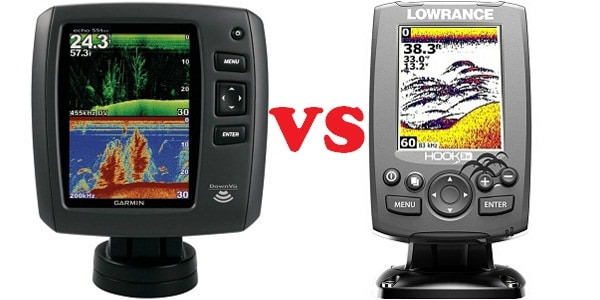
The display is the heart of a fish finder. It’s where you actually see the data that the device collects. Needless to say, a quality display is important.
1. The first factor to look at is display size. How big of a screen do you need? Most fish finders have between a 4-inch and 12-inch screen. Many popular models are available with different screen sizes depending on your preferences.
Personally, we feel that screen size is the least important display spec. Yet that doesn’t mean you should opt for the smallest available. A larger screen is much easier to use in the field. The larger the screen, the higher the cost, but in our opinion it’s more than well worth it.
2. Next up are pixels (picture elements). The more pixels there are, the better the resolution and quality of the screen. It’s especially important to have a high-pixel display on a device with a split-screen.
A higher pixel rating provides a clearer image, especially of underwater structures. It helps you see fish better, especially individual fish swimming separate from schools and fish swimming along the bottom.
Of course, a higher pixel rating comes with a higher price tag. However, you definitely get what you pay for when it comes to the best screen resolution.
3. The last display related factor to consider is color. A black and white (or greyscale) display gets the job done but doesn’t look nearly as nice as a color display.
Color displays are often easier to read as well. The different colors make subtle differences easier to distinguish than various shades of grey. This makes finding and identifying fish even easier.
Finally, a color display is generally easier to read in both bright sunlight and in the darkness of night.
The thing is, black and white depth finders have effectively pinpointed thousands of fish. Yet anyone that has a color fish finder certainly doesn’t wish it was black and white instead.
Transducer Specifications
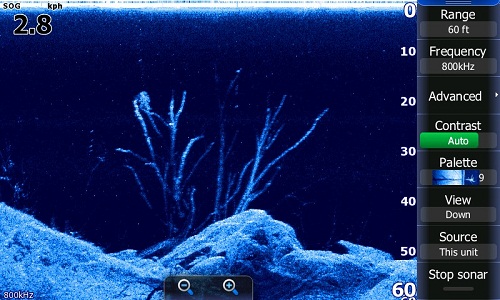
The transducer is the actual part of the fish finder that sends out the sonar signal to look for fish and map underwater structures. Without a top quality transducer, your fish finder is all but useless.
1. The first factor to look at is transducer power. The power of a fish finder directly relates to how effectively it works. A powerful fish finder allows you to view deeper depths, see more clearly in murky water, and better differentiate between fish and bottom structures.
Fish finder power is calculated in watts RMS (root mean squared). 500 watts is a good base to work from. A 500-watt RMS fish finder will work for almost all applications. In fact, most freshwater fishermen will be fine with a 200-watt RMS fish finder.
2. Frequency is the next factor to take a look at. The higher the frequency, the better the overall detail. A higher frequency fish finder also provides the best view from a moving boat. The downside? You can’t view as deep on a high-frequency fish locator.
Low-frequency fish finders, on the other hand, can penetrate much deeper. The downside is that the images they provide are less detailed.
So what’s the perfect frequency?
200kHZ to 800kHz is perfect for shallow waters while 50kHz to 80kHz is best for deeper waters. Many fish finder models come with multiple frequency transducers for varying conditions.
CHIRP (Compressed High Intensity Radar Pulse), also known as broadband, is changing the fish finder industry. These devices transmit on multiple frequencies at once.
Though they’re by far the most expensive option, they also provide unparalleled resolution and fish detection. CHIRP fish finders give you inch-by-inch details rather than foot-by-foot details.
Viewing Angle
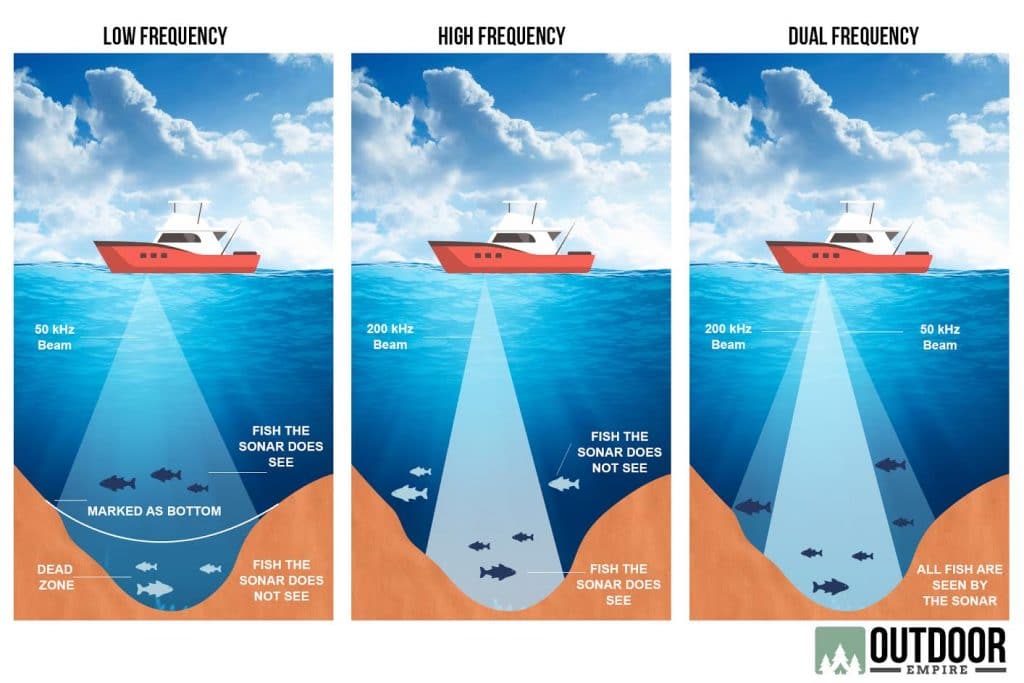
There used to be 3 beam angle options when it comes to fish finder:
1. A low-frequency transducer gives you a great view side to side to detect fish around the boat not just under it. This type of fish finder is best for anglers that don’t need a detailed view but benefit from seeing deeper and to the sides.
2. A high frequency transducer allows you to look down with great detail without much of a side view. This type of fish finder is best for anglers needing better fish and bottom separation.
3. And finally, there’s the dual frequency transducer (CHIRP ) that gives you the benefits of both. These fish finders are the most versatile and can spot details and also provide a broad view around the boat.
Side and Down Scan
However, new technologies called side and down imaging or side and down scan have become increasingly popular. Both of these provide you with better viewing angles and greater detail than the previously mentioned solutions.
Learn more about these technologies and their differences in our article: Down-Imaging Vs. Side-Imaging Finally Explained!
Mounting Type
Most fish finders, especially those intended for freshwater use, come with a transducer included. Serious anglers sometimes choose to invest in a separate transducer that better fits their personal needs.
There are a handful of main transducer types as it relates to mounting. These are thru-hull, transom-mount, in-hull, and trolling motor. Each has its own set of pros and cons.
Thru-Hull – Best signal quality but difficult to install. Goes right through the hull to the bottom of the boat.
Transom-Mount – Mounted to flat part of the stern of the boat (transom) so it hangs below the hull. Simple to install but is often negatively affected by water flow.
In-Hull – Glued to inside of hull. Signal penetrates through the hull and doesn’t need direct water contact to work.
Trolling Motor – One of the most popular options. Installed, usually permanently, inside the propeller hub of a trolling motor.
Further reading: The 6 Best Portable Fish Finders Reviewed & Tested ( Hands-on 2019 Guide )
Global Positioning System ( GPS )
Most modern fish finders come with a built-in GPS. However, there are still some models that don’t.
A GPS combo fish finder has a lot of benefits. First and foremost, it can help you find your way home if an emergency situation comes up. An example is a sudden and blinding fog.
The other big benefit if the ability to make custom maps. GPS on your fish finder enables you to mark locations. You can drop pins on places you want to fish again as well as places with hazards like stumps or docks.
The only real downside to a GPS combo fish locator is price. Their simply more expensive than their non-GPS counterparts.
The Three Main Options
No matter the specific features you desire, you have three main fish finder options to select from. The choices are standalone, combo, and network fish finders.
- Standalone – Only a fish finder. Not capable of any other functions. See what’s below you for the cheapest cost. Best for small boats and fishing on small lakes.
- Combo – Combines a GPS and fish finder. Perfect for mid-sized boats and fishing on open bodies of water. More easily find prime fishing grounds with the help of GPS.
- Network – Compatible with a wide range of technologies, products, and data sources. Combine your fish finder with radar, video, satellite radio and more. Control with your smartphone. Best for large ships. Network fish finders are constantly being updated each year.
The specific features you need on your fish finder boil down to your individual needs, preferences, and budget.
External Factors to Consider
A number of external factors can affect the best fish finder choice for you. The most important to consider include:
- boat type/size
- water depth
- water conditions
- saltwater vs freshwater
- and fish type.
Boat Type/Size
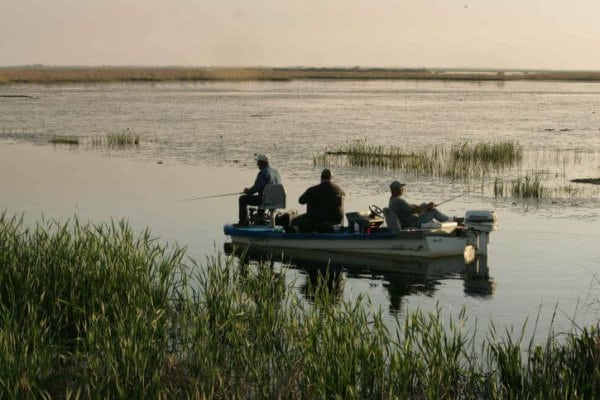
How large is your boat?
Let’s start with boat size first. In the past, smaller boats have required fish finders with smaller transducers. Thru-hull and transom-mount transducers are generally too large for boats smaller than 30 feet. They create enough drag to negatively affect the boat’s handling, stability, and safety.
How often do you use trailer?
Thru-hull and transom-mount transducers also create problems with boats that are regularly trailered. Because these sensitive instruments are placed on the bottom of the boat, trailers can cause damage to them.
That’s where in-hull and trolling motor transducers come into the picture. Neither type of depth finder has a transducer that extends below the hull. This makes them safe to use with small boats (don’t affect handling) and boats that are regularly trailered (nothing to be damaged).
The other rule of thumb regarding boat size is that standalone units work best with small boats, combo GPS units best for mid-sized boats, and network units best for big boats.
Powerful CHIRP units are likewise essential on boats that will be moving at high speeds. Unlike lower-end model fish finders, these can effectively scan and provide data while a boat is moving relatively fast.
Canoes & Kayaks
The last thing to keep in mind is that very small boats, such as canoes and kayaks, are best outfitted with very small fish finders. Select a fish finder that works very well in shallow water like marshes, as this is what canoes/kayaks are best for.
However, your canoe/kayak fish finder also needs to be powerful enough to easily differentiate between types of fish. With such a small craft, it’s imperative you know the type of fish you’re located by so you don’t hook one that’s too big.
Finally, it’s always smart to invest in a GPS combo fish finder if your plan is canoe/kayak fishing. Getting lost is even more deadly in these small craft so make sure you can find your way home in a bind.
Further reading: Best Fish Finders for Kayaks of 2019: The Definitive Guide (In-Depth Reviews)
Saltwater vs Freshwater
Consider the type of water you’ll be fishing in: saltwater or freshwater.
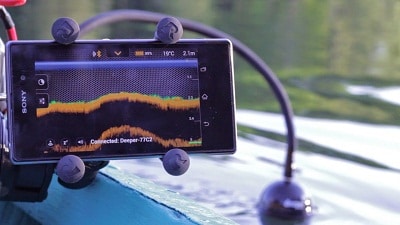
Saltwater is a more challenging environment than freshwater. In addition to the salt and other debris, the sheer amount of living organisms often throws fish finders off.
If you’re fishing in saltwater, we suggest investing in the quality. CHIRP models do a much better job at working through the debris than traditional models especially in deep waters. Look for a fish finder specifically designed for saltwater as well.
Freshwater, on the other hand, isn’t as much of a challenge for fish finders. The only piece of advice to keep in mind here is to look for one with a higher frequency for shallower waters.
Freshwater anglers benefit more from a low frequency sonar while saltwater anglers benefit more from a high frequency scanner. Of course, an all-around transducer, which includes frequencies, works perfectly for either.
Remember that many fish finders come with a variety of settings. Some even allow you to select between a saltwater and a freshwater setting. This models are ideal if you plan to use the same boat in both environments.
Water Conditions
You have to consider the water’s depth. As we’ve discussed a few times already, different fish finders work better in different depths.
- Fishing in shallow water requires a high-frequency fish finder.
- Fishing in deep waters requires a low-frequency fish finder.
- A model that uses dual frequencies is ideal for those who plan to fish in both types of water.
Type of Fish
What kind of fish do you plan on catching?
Of course, fish type once again relates to factors like depth and saltwater/freshwater. Find a unit that works best at the depth where the fish you’re after are usually located. Here are the essential points worth remembering:
- A powerful fish finder is much better in identifying individual fish.
- Cheaper models tend to only locate schools of fish or vaguely identify individual species.
- Different species of fish also show up better or worse on different scanners due to their frequency ranges. Higher frequencies, in particular, are best at spotting isolated fish as well as smaller species.
Once again, a CHIRP fish finder is the best choice if you can afford it. They work well in all conditions and for all types of fish — both individual and school.
Pros and Cons of Top Fish Finder Brands
Several fish finder companies stand head and shoulders above the rest. These brands are the most popular and time-tested out there.
Each is known to cater to a particular area of the market. Searching for the best fish finder by brand is often helpful. Here are the top four fish finder companies in operation today with the pros and cons of their products.
Garmin
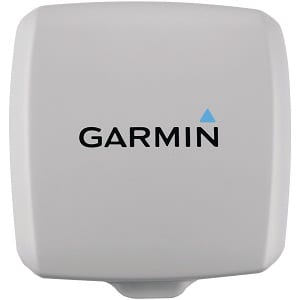
Renowned for their contribution to automotive, aviation, maritime, and outdoor GPS technologies, it comes as no surprise that Garmin is the most powerful name in the fish finder world.
History
The company was established in 1989 and has since grown into one of the world’s leading specialists in GPS development. As you might suspect, most of their fish finders come equipped with this GPS.
Garmin has that area of the market cornered. Their GPS combo fish finders are undoubtedly the best. They’ve fine-tuned their mapping applications to make marking and finding the best fishing spots as intuitive as possible.
Company’s Focus
Something that stands out about Garmin is the durability of their products. All of their fish finders are, as their company motto states, “built to last”. A fish finder needs to stand up to extreme wear and tear as well as severe weather conditions – their units do this and more.
Popular Series
Garmin has several fish finders in its lineup, but none are as popular as the Striker. Available in different screen sizes, each Striker is equipped with GPS and CHIRP sonar.
Though the Striker comes with an included transducer, Garmin also produces a wide array of aftermarket sensors. These are perfect for those fishermen using their fish finders for specialized applications.
Overall
Strengths
- overall durability
- highly-sensitive GPS
- CHIRP sonar
- transducer versatility
Downside
- high price
- Lack of data entry capability. You can’t enter data saved on another device to your Garmin fish finder.
Best For
- Serious fishers will greatly appreciate their high-quality fish finders.
- The CHIRP sonar is perfect for those fishing in variable conditions where great precision is required.
Simply put, the high price tag for a Garmin fish finder scares away all but the most serious anglers.
Lowrance
Lowrance has a stellar reputation as a reliable manufacturer of GPS, sonar, and digital mapping systems, specifically for maritime applications. Their expertise with such technologies is apparent in the quality of their fish finders.
History
The company was founded in 1957. Ever since its very beginnings, it’s been dedicated to fishing. The founder, Carl Lowrance, created the company after noticing that most fish are found in schools and specific areas.
Lowrance and his sons set about creating a device to make it easy for fishermen to locate these fish-heavy locations. The result was a lightweight, compact, and portable precursor to modern fish finders. It was the first instrument to use sonar technology for sport fishing.
The company’s history in the creation is still evident to this day. Their fish finders are among the most effective around. It’s apparent all those years of experience have paid off.
It’s hard to say that any aspect of the company is more impressive than its history. Lowrance is simply the most trusted name in the fish finder industry.
Company’s Focus
Lowrance doesn’t exactly cater to a specific area of the fish finder market, although their deep water fish finders are their most popular.
These devices employ their award-winning Broadband Sounder technology, as well as DownScan imaging, making it easy to find the fish you’re looking for.
Popular Series
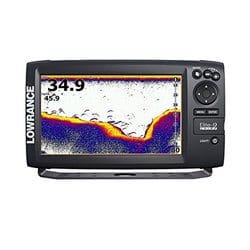
Advanced Signal Processing adjusts the image you see automatically, reducing the need for manual adjustments. The Elite-9x CHIRP is fully equipped with GPS technology.
Overall
Strengths
- DownScan Imaging
- CHIRP sonar
- multitude of settings options
- vast selection of models
Downside
- Their fish finders are notoriously difficult to learn, yet everything will click before long.
Best For
- Serious fishermen who don’t want to dish out a crazy amount of money. They’re solid devices at reasonable prices.
Humminbird
Humminbird is unique among companies on this list because they focus solely on fish finders. They don’t produce any other products.
Their specific dedication to fish finders allowed them to create some of the best models available. It also translates into the most extensive selection. They have a model that suits just about any angler’s needs and preferences.
History
The company was founded in 1971. Since day one, their goal is to create the best fish finders on the market.
Though their current offerings are a far cry from those products from the old days, they still have that classic Humminbird dedication to quality and attention to detail.
Company’s Focus
Like Lowrance, Humminbird doesn’t attempt to target a specific part of the market. Instead, they produce a wide variety of fish finders for different uses. They have units for:
- big boats and small boats
- freshwater and saltwater
- shallow water and deep water
The options are endless. It’s this diversity of products that helps Humminbird stand out. No matter what you’re looking for, the company has a fish finder that’s perfect for you.
Case in point is their ICE series. Unlike most fish finders that are designed to be used on boats in open water, these are specifically designed for ice fishing.
The ICE series instantly gives you the exact depth you’re fishing at and pinpoints any fish beneath you. The built-in GPS helps you pinpoint hot spots so you can return to them later.
Popular Series
While the ICE series is arguably Humminbird’s unique product, it’s not their most popular. That honor lies with their Helix series.
Available in screen sizes ranging from 5 inches to 12 inches, these fish finders combine broadband CHIRP sonar with some of the most impressive mapmaking software we’ve seen.
Another highlight of the Helix series is its display. It’s one of the brightest and clearest we’ve seen. The interface is also high among the most intuitive and easy to learn to use.
Overall
The high points of the Helix and ICE fish finders translate to all other Humminbird products.
Strengths
- robust, durable construction of their devices
- vast selection that suits every angler’s needs
- their dedication to fishing
Downside
- Slow processing. The data they provide is great but it often takes a long time for it to appear on screen.
Raymarine
Raymarine Marine Electronics is a pioneer of many most well-respected marine electronics products. In addition to fish finders, they also manufacture autopilots, radar, thermal cameras, satellite televisions, and more.
History
Founded over 80 years ago, Raymarine has a lot of experience in the marine world. And this experience shines through in all of their fish finders. When you take a company with an explicit passion for fishing, their fishing products are naturally a notch above the rest.
Company’s Focus
Raymarine focuses on the high-end market. The bulk of their fish finders are undoubtedly high-end with high price tags to match. Though they do have more basic options available, these simple fish finders are not what they’re known for.
In fact, Raymarine is known for the impeccable quality of its products. All of their fish finders (as well as their other marine electronics) are known for their ease of use, durable design, and overall reliability. They are simply designed to last for the long haul.
Raymarine is notable for the variety of add-ons and accessories they offer. You can select from individual transducers, GPS antennas/sensors, chart plotters, and more to completely customize your fish finding set up.
Popular Series

The Raymarine eS fish finder comes with an HD touchscreen display (available up to 12 inches in size). Built-in GPS, Wi-Fi, and Sounder Module are other useful features.
The built-in CHIRP DownVision is the eS fish finder’s shining point. The powerful technology means you’ll spend less time looking for fish and more time catching them.
Overall
Strength
- Ease of use of their products. Even the most unsavvy angler can learn to use them effortlessly.
Downside
- Their best products cost more than any other companies.
Decision Is Up To You
Fish finders come in all shapes and sizes. There is something for every need, preference, and budget. It’s impossible to tell you straight out which one to buy. That boils down to your intended uses for that fish finder.
The information above provides a great outline for your research. Use it to narrow down your options to select the right fish finder for you.
This guide is part of beginner fishing gear introduction.
Other resources you might be interested in:
Ozark Anglers Forum – How to read and understand your fish finder.

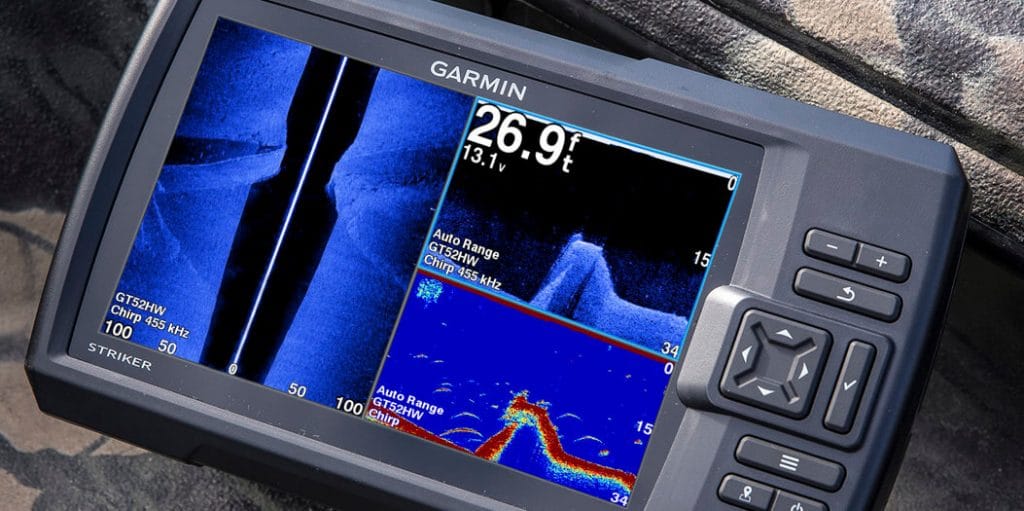
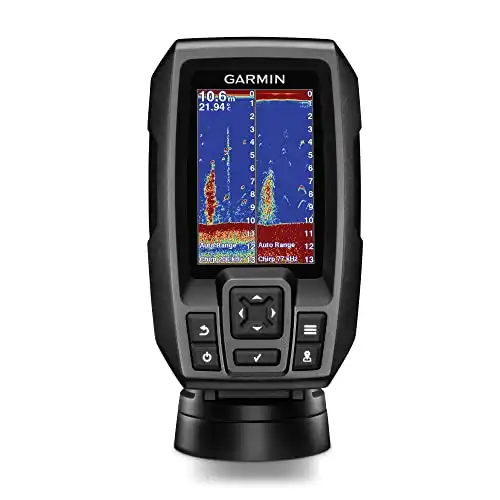
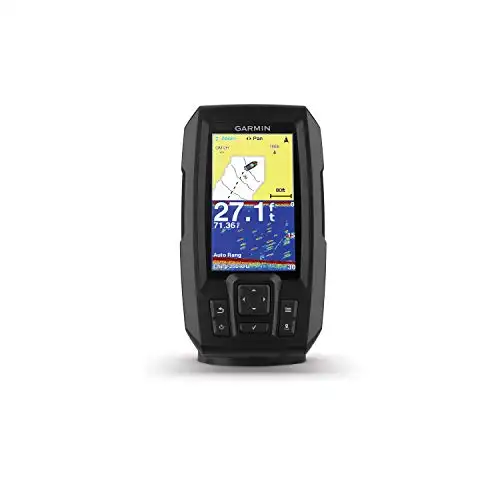
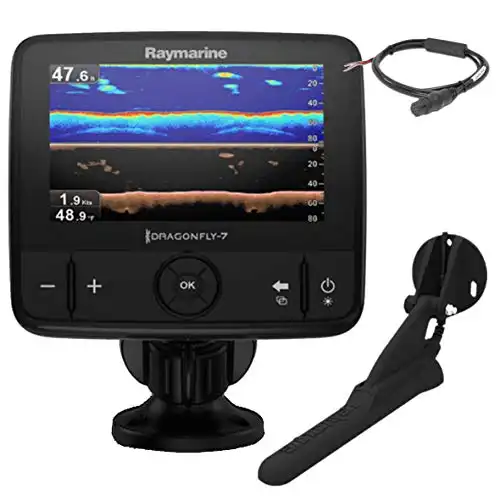
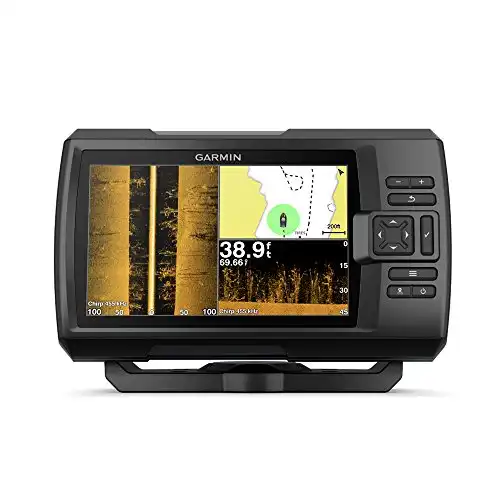
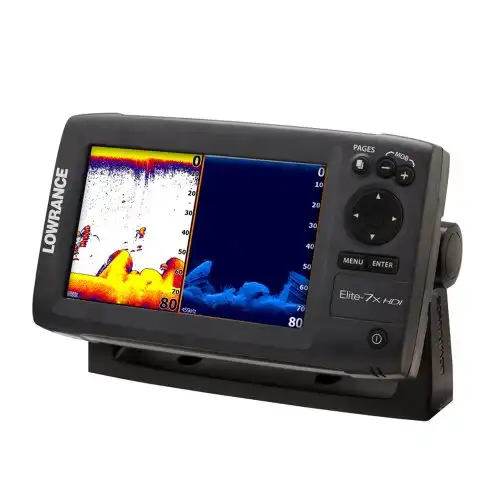
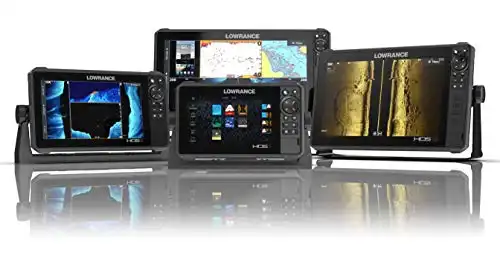
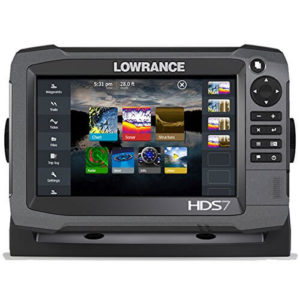
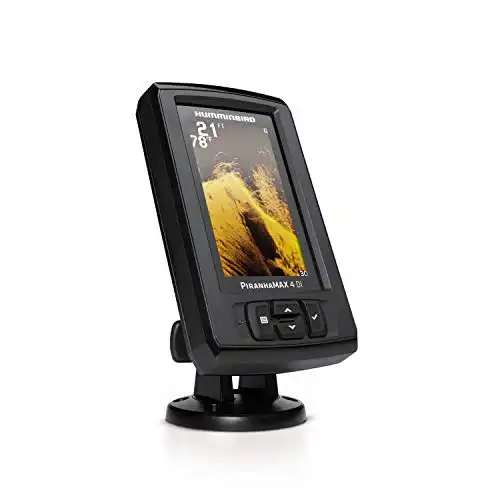
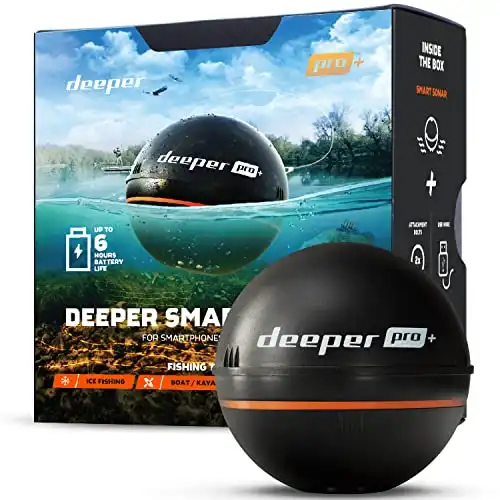

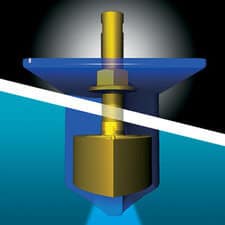
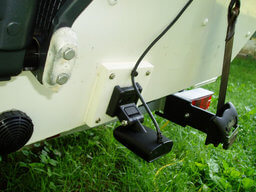
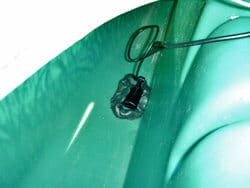
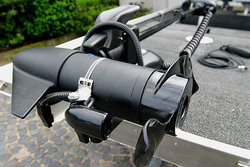
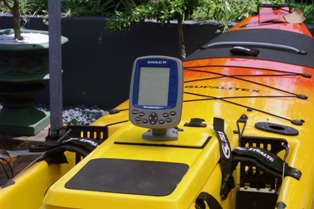
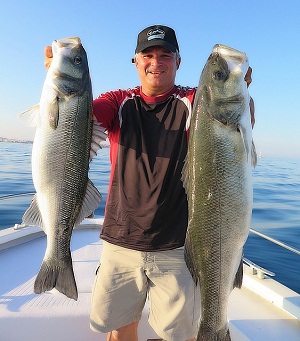
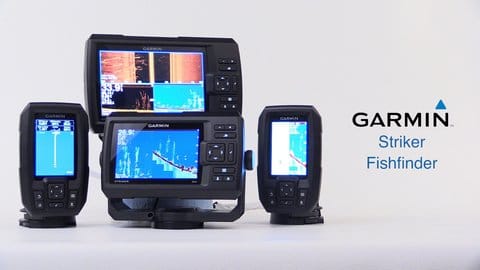
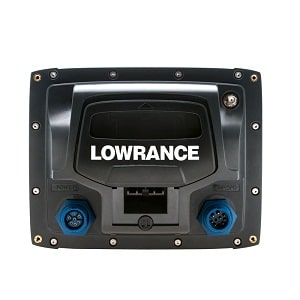
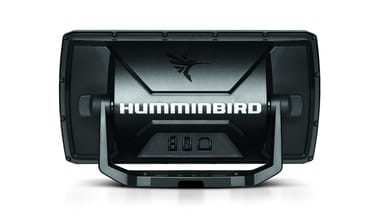
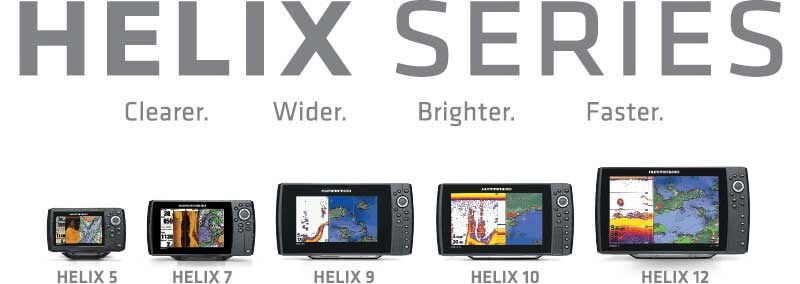
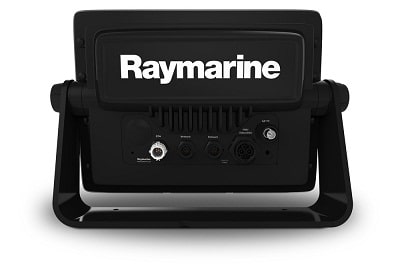
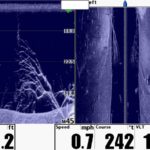


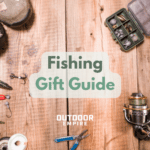
Comments are closed.